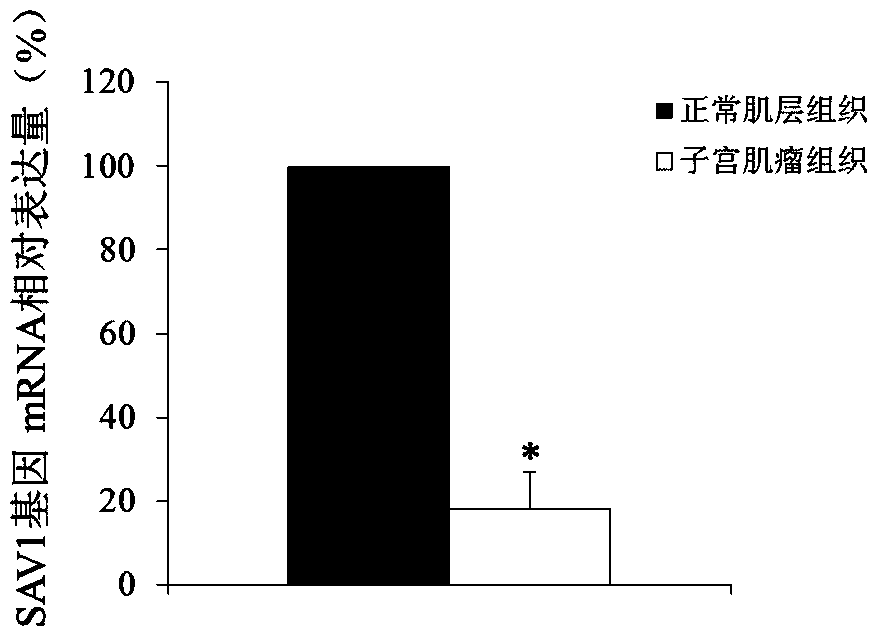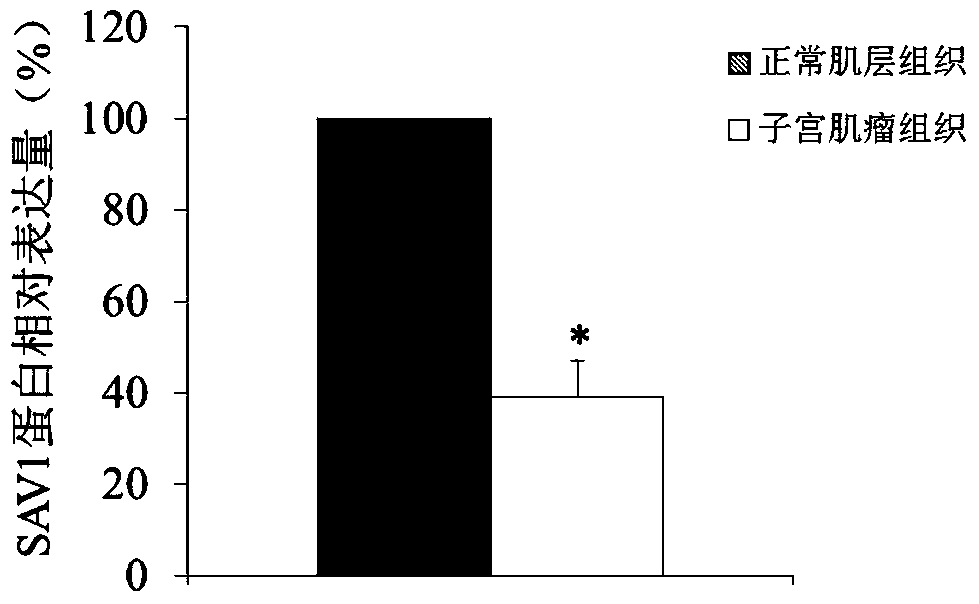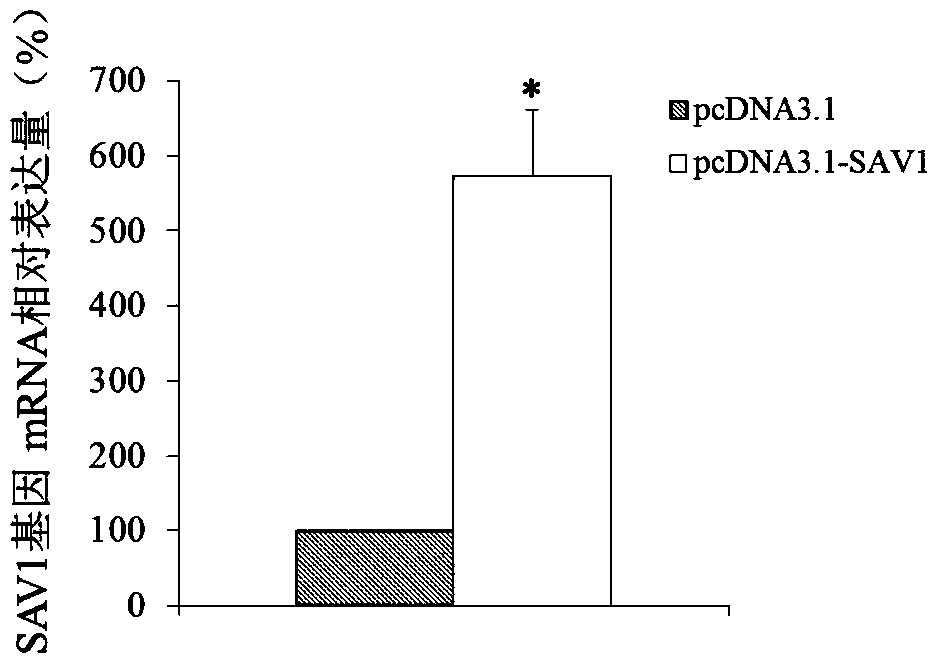Use of sav1 gene as a marker for diagnosis and treatment of uterine fibroids
A technology of uterine fibroids and genes, which is applied in the determination/testing of microorganisms, medical preparations containing active ingredients, drug combinations, etc., and can solve the problems of sensitivity and specificity defects of detection methods
- Summary
- Abstract
- Description
- Claims
- Application Information
AI Technical Summary
Problems solved by technology
Method used
Image
Examples
Embodiment 1
[0059] Example 1 Differences in the expression of SAV1 gene in normal muscle layer tissue and uterine leiomyoma tissue
[0060] 1. Experimental materials:
[0061] Uterine fibroid tissue and adjacent normal muscle layer tissue were aseptically collected from patients undergoing total hysterectomy for uterine fibroids. The patient had not received hormone therapy within 3 months before operation, and all patients were pathologically diagnosed as uterine fibroids after operation. , the experimental materials were taken from 40 patients with uterine fibroids, and the patients were between 25 and 45 years old.
[0062] 2. Detection of differential expression of the SAV1 gene at the transcriptional level
[0063] 2.1 Extraction of tissue RNA (using Norgen RNA extraction kit)
[0064] 1) In a clean area with less RNase interference, use a mortar containing an appropriate amount of liquid nitrogen to weigh about 20 mg of the isolated tissue sample, and grind it to powder with a pes...
Embodiment 2
[0118] Example 2 SAV1 gene expression plasmid construction
[0119] 1. Construction of SAV1 gene expression vector
[0120] Amplification primers were designed according to the coding sequence of the SAV1 gene (as shown in SEQ ID NO.1). Amplify the coding sequence of the full-length SAV1 gene from the cDNA library of adult fetal brain (clontech company, article number: 638831), insert the above cDNA sequence into the eukaryotic cell expression vector pcDNA3.1, and connect the obtained recombinant vector pcDNA3.1 -SAV1 was used in subsequent experiments.
[0121] 2. Culture and transfection of uterine leiomyoma cells
[0122] Immediately after surgical resection of uterine fibroids, 1 cm of each uterine fibroid tissue was taken under aseptic conditions, placed in 10 mL of 3% double-antibody (penicillin, streptomycin) in PBS, and sent to the cell culture room as soon as possible in an airtight ice bath. Uterine leiomyoma tissue was rinsed with 3% double-antibody PBS solution,...
Embodiment 3
[0136] Example 3 Effect of SAV1 gene on proliferation of uterine leiomyoma cells
[0137] MTT assay was used to detect the effect of SAV1 gene on the proliferation ability of uterine leiomyoma cells.
[0138] 1. Steps: trypsinize each group of cells 12 hours after transfection, make a single cell suspension, inoculate 6000 cells per well in a 96-well culture plate, set 7 time points for each group, and set 6 times for each time point. multiple holes. After the cells adhere to the wall, perform the first test: add 20 μl of 5g / L MTT solution to each well, continue to cultivate for 4 hours, aspirate the medium, add 150 μl of DMSO, and carefully blow and beat to fully dissolve the purple-blue precipitate. The instrument measures the absorbance value (A value) at a wavelength of 490nm. Then every 12h detection 1, continuous measurement 72h, a total of 7 times. This experiment was repeated 3 times.
[0139] 2. Statistical methods
[0140] The experiments were all repeated three...
PUM
 Login to View More
Login to View More Abstract
Description
Claims
Application Information
 Login to View More
Login to View More - R&D
- Intellectual Property
- Life Sciences
- Materials
- Tech Scout
- Unparalleled Data Quality
- Higher Quality Content
- 60% Fewer Hallucinations
Browse by: Latest US Patents, China's latest patents, Technical Efficacy Thesaurus, Application Domain, Technology Topic, Popular Technical Reports.
© 2025 PatSnap. All rights reserved.Legal|Privacy policy|Modern Slavery Act Transparency Statement|Sitemap|About US| Contact US: help@patsnap.com



